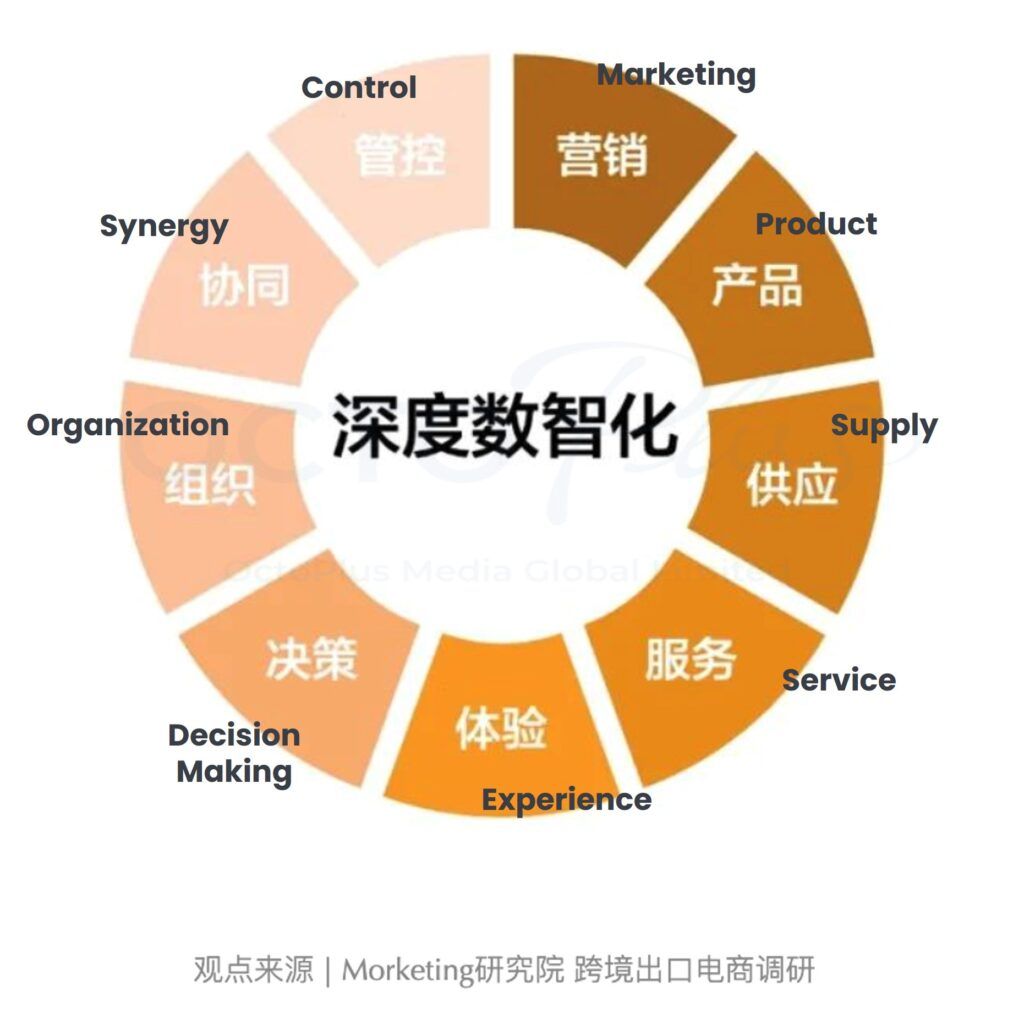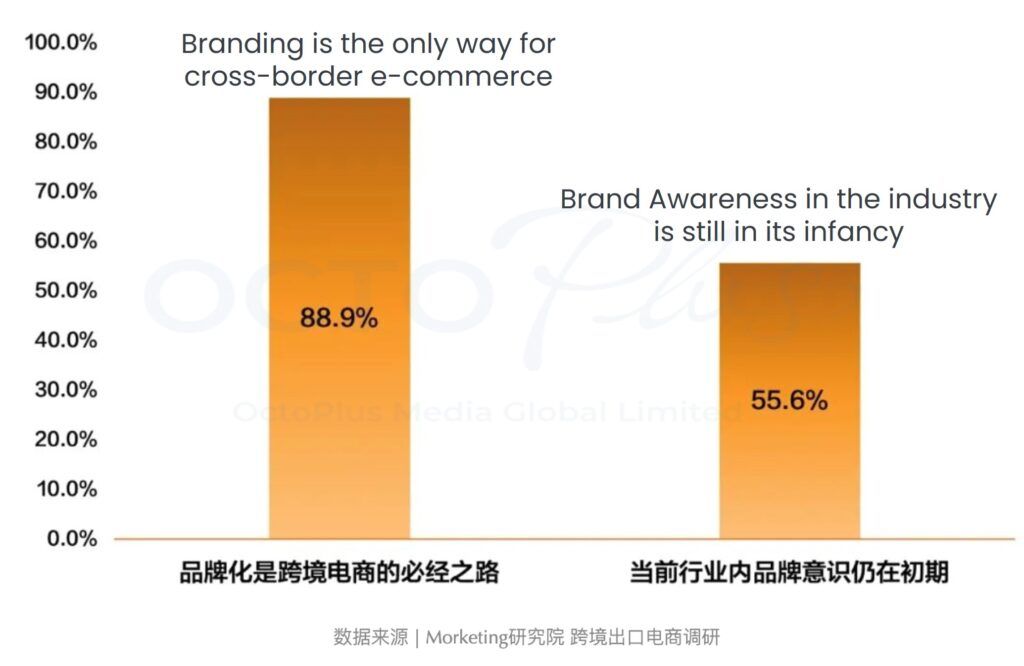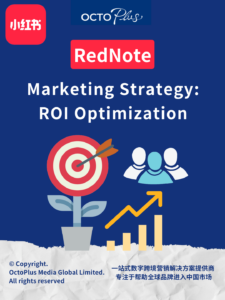China Cross-border Export E-commerce Marketing and Trends 2022 – 2023
In the past year, China has ranked first in the global import and export ranking, with a net import and export commodities reaching about 605.1 million US dollars in 2021, of which the export value of commodities exceed 3.36 trillion US dollars and the total import value is about 2.69 trillion US dollars. The United States and Germany rank second and third respectively.
Despite being affected by the epidemic in the economic environment, global e-commerce maintains its growth trend and achieves rapid development, while cross-border e-commerce has a breakthrough. The Morketing Research Institute conducted an industry survey on China’s cross-border export e-commerce and published the report “2022-2023 Cross-border Export E-commerce White Paper: “In Search of Certainty”. Based on this report, we have compiled various marketing highlights, future development trends, and growth strategies for cross-border export e-commerce.
Marketing Playbook
Social media platforms such as Google, Facebook, Instagram, TikTok, YouTube, etc remain as main delivery channels
Use short video marketing to promote your brand and unlock the value of private domain traffic, leading to conversions and becoming a new consumption channel for cross-border e-commerce
Strong interaction, strong product longing and strong conversion will continue to be promising, including short videos, KOL influencer marketing and live broadcasting
Marketing methods that integrate with emerging technologies such as AR, VR, etc., can increase topicality and attention with diversified delivery layouts
Conversion cost and conversion rates
According to Skai.io’s data report, the overall social media advertising expenditure of China’s cross-border e-commerce in the first quarter of 2022 increased by 10% year-on-year, but advertising only achieved 95% of the number of social media advertising impressions in the first quarter of 2021, indicating that traffic efficiency is reduced and ad conversion rates are decreasing. Judging from the survey results, cross-border e-commerce is currently facing difficulties in customer acquisition and conversion, as most cross-border e-commerce sellers have insufficient knowledge of the industry and consumers in the target areas, such as different consumption habits of consumers in China and abroad, uniform traffic layout, inaccurate target audience, etc.
Marketing Transformation
The traditional traffic and distribution model has gradually weakened, refinement and digital model transformation are the current period of change for cross-border e-commerce. The refined model can reduce costs and increase efficiency, rationally plan and allocate human resources. However, most domestic e-commerce sellers are still in the initial and exploratory stage, they do not have enough awareness of the transformation models, ostensibly aware of the importance of transformation but are not yet able to apply it. Sellers need to have more refined data and digital analysis of target customer profiles and consumer behaviour, and actively seek to utilize platforms/systems to improve the efficiency of operations management, at the same time, they also need to optimize the marketing level to ensure two-way improvement of advertising efficiency and effectiveness.
The future development trend of cross-border export e-commerce
1. Digitalization – create digital transformation and innovation for overseas business, whether in logistics, warehousing, service, marketing, management, etc., to achieve overseas product and brand upgrades. Under the “Guidelines for Overseas Investment and Cooperation in the Digital Economy” issued by the Ministry of Commerce, Cyberspace Administration of China, Ministry of Industry and Information Technology, “digital intelligence” is an inevitable option for China enterprises to go overseas.

2. Branding – create long-term brand value, seize the brand and image position in the users’ hearts, improve awareness and competitive advantage, and the brand DTC (Direct-to-Consumer) independent channel is a strong and effective realization channel. Nearly 90% of the respondents believe that branding is the key development direction for the future.

3. Refinement – sellers need to improve the efficiency of traffic utilization with a more sophisticated operational direction or tap into deeper traffic, value-added products, more diversified marketing, as well as a more detailed breakdown and understanding of user groups. With the complexity and ever-changing market, the cost and threshold of enterprise customer acquisition are gradually increasing, and the new requirement of refinement can enable accurate target user positioning and targeted delivery, resulting in more effective traffic conversion.

4. Compliance – raise awareness of security compliance, such as compliance of various businesses including finance, taxation, privacy, platform, capital, intellectual property rights, etc., as well as risk control management. Perhaps departmental policies will have an impact on this in the short term, but in the long run, compliance is a benign impetus for the industry.

5. Diversification – using high interactivity and strong content marketing is very helpful in promoting, increasing awareness and driving conversions. Therefore, to avoid dependence on a single platform, try to increase the number of off-site traffic in a multi-channel and multi-form layout. The diversified layout logic revolves around the three aspects of sales, marketing and content
Six growth strategies for cross-border export e-commerce
Private traffic growth – market development is becoming more and more unstable in 2022, private domain can achieve various goals at different stages (focusing on selling goods, precipitating users, testing new products, increasing repurchase), and building brand image through the private domain to achieve a brand premium. “Attract new, precipitating, re-operating, and attracting-new” is a circular process created for private domain traffic.
Gameplay breakthrough – the overseas and China market environment is similar, and consumers are influenced by the internet and technological products. Emerging sales channels such as CTV, emerging marketing methods such as integrated VR/AR, partner marketing, guided marketing and other methods are also preferred by sellers.
Digital transformation – even though the digitalization process in the industry is still in the early stage of exploration, business decisions should use data as a reference to establish analytical models to find growth indicators and strategic directions through data insights, etc., while understanding the advantages and disadvantages of users and products
Comprehensive localization – from product to marketing to the team, improves localization strength all around, but localization is a long-term process that needs to be built systematically.
Refined operation – in-depth analysis of user behaviour, equipment, channels and other dimensions, to obtain a complete user profile and achieve refined operation, while effectively using traffic, focusing on user engagement, conversion and exploring the value of traffic. In addition, differentiation is achieved by focusing on the externalization of products and the spiritual core.
Strengthen internal strength – different industries face different challenges and uncertainties, by strengthening internal strength, the ability to withstand risks, offset impacts, and find “certainty” under uncertainty can be improved.
For more details, please contact us!
Feel free to talk to us
It’s a team with one single shared goal, which is our client’s success. Deliver results for your business now.
































